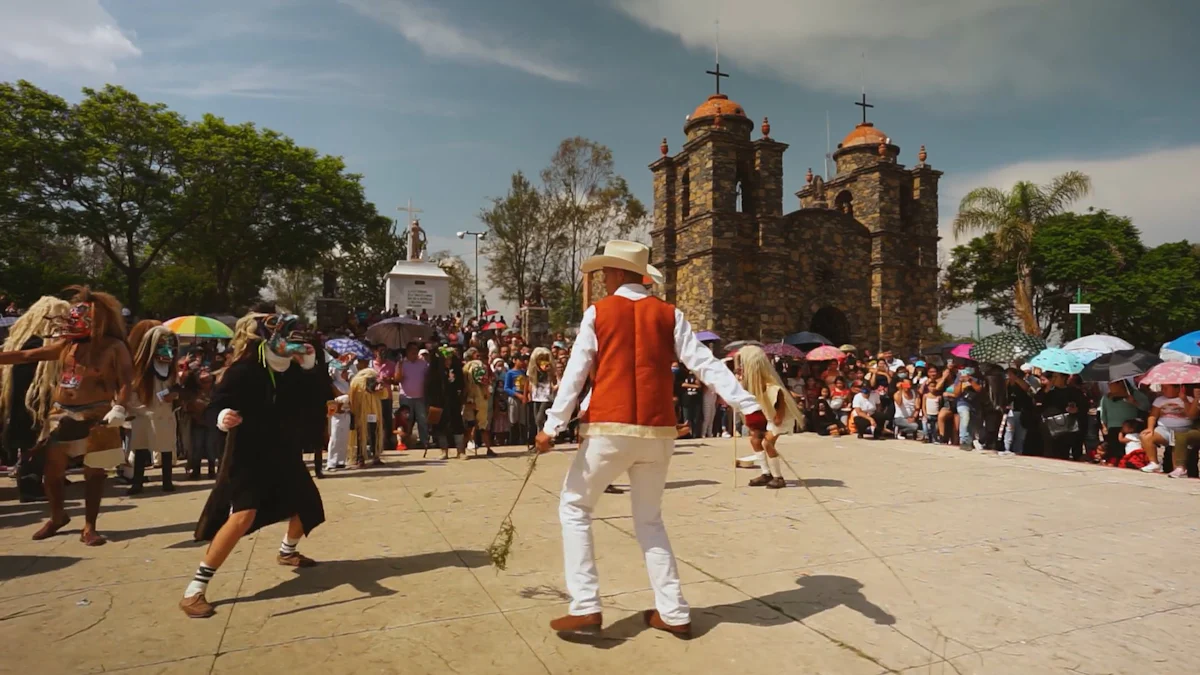The Interplay Between Globalization and Cultural Heritage Preservation

Globalization acts as a powerful force, connecting societies and fostering cultural exchange on an unprecedented scale. It enables the sharing of traditions, ideas, and values across borders, creating opportunities for mutual understanding. However, cultural heritage preservation remains essential for safeguarding identity and maintaining diversity in a rapidly changing world. The rise of globalization has brought both opportunities and challenges, influencing how communities protect their unique traditions while adapting to global influences. This dynamic interplay shapes the future of cultural heritage, highlighting the need for balance between progress and preservation.
Key Takeaways
Globalization enhances cultural awareness by providing access to diverse traditions and practices, fostering appreciation for global heritage.
Cross-cultural collaboration driven by globalization leads to innovative cultural expressions, benefiting artists and communities alike.
Cultural homogenization poses a threat to local traditions, making it essential to find a balance between embracing global influences and preserving unique identities.
The commercialization of culture can distort its meaning; prioritizing authenticity over profit is crucial for genuine cultural preservation.
Leveraging technology, such as digital archiving and virtual reality, can significantly aid in documenting and preserving cultural heritage for future generations.
Education and community engagement are vital for fostering appreciation and active participation in cultural heritage preservation efforts.
Effective policy-making and international cooperation are necessary to protect cultural heritage from exploitation and ensure its authenticity in a globalized world.
Positive Impacts of Globalization on Cultural Exchange

Enhanced Cultural Awareness and Accessibility
Globalization has significantly increased cultural awareness by exposing individuals to diverse traditions, languages, and practices. Through advancements in technology and media, people now access cultural artifacts, performances, and historical narratives from across the globe. For instance, digital platforms allow museums to showcase their collections online, enabling global audiences to explore cultural treasures without geographical limitations. This accessibility fosters a deeper appreciation for the richness of human heritage.
Moreover, tourism plays a pivotal role in enhancing cultural awareness. Travelers immerse themselves in local customs, cuisine, and art, gaining firsthand experiences of different cultures. This exchange not only broadens perspectives but also encourages respect for cultural diversity. As societies become more interconnected, the shared understanding of cultural values strengthens global relationships.
"The diffusion of cultures through globalization reduces barriers between countries, creating a more homogenized world where interests and ideas are shared." This interconnectedness promotes inclusivity while celebrating the uniqueness of each culture.
Opportunities for Cross-Cultural Collaboration and Innovation
Globalization has created a fertile ground for cross-cultural collaboration, driving innovation in various fields. Artists, scholars, and entrepreneurs from different backgrounds now collaborate to produce groundbreaking work that blends traditional and modern influences. For example, international film festivals and art exhibitions provide platforms for creators to share their perspectives, resulting in unique cultural expressions.
Educational institutions also benefit from this collaboration. Exchange programs and joint research initiatives enable students and academics to learn from diverse cultural contexts. These interactions inspire innovative solutions to global challenges, as individuals combine their knowledge and skills to address complex issues.
Additionally, the global market has opened doors for cultural industries to thrive. Traditional crafts, music, and literature gain international recognition, creating economic opportunities for local communities. By integrating cultural heritage into global platforms, societies preserve their traditions while adapting to contemporary demands.
Comparative studies of cultural changes during globalization reveal the need for indicators to measure preservation efforts. Such research can guide future strategies for balancing innovation with cultural integrity.
Challenges of Globalization to Cultural Heritage Preservation
Cultural Homogenization and Loss of Diversity
Globalization has accelerated the spread of standardized cultural norms, often overshadowing the uniqueness of local traditions. The dominance of Western ideals, amplified by global mass media and multinational corporations, has led to the erosion of cultural diversity. For example, traditional practices and languages face extinction as younger generations adopt global trends over ancestral customs. This shift threatens the survival of marginalized identities, which struggle to maintain relevance in a homogenized world.
The proliferation of international brands and media further exacerbates this issue. Restaurants, fashion, and entertainment industries often promote a uniform culture, leaving little room for regional variations. As a result, communities lose their distinctiveness, and cultural hybridity becomes a challenge rather than an opportunity. The balance between preserving local heritage and embracing global influences remains a critical concern.
"Globalization has fostered extensive global connectivity but has also raised concerns about cultural homogenization." This duality highlights the need for proactive measures to protect cultural diversity while navigating the interconnected world.
Commercialization and Misrepresentation of Cultural Practices
The commodification of culture has emerged as another significant challenge. Globalization has transformed cultural heritage into marketable products, often stripping them of their original meaning. Traditional crafts, festivals, and rituals are frequently repackaged for tourism or commercial purposes, prioritizing profit over authenticity. This trend risks reducing cultural practices to mere spectacles, disconnected from their historical and spiritual roots.
Misrepresentation further compounds the problem. Inaccurate portrayals of cultural symbols and traditions in global media can perpetuate stereotypes and distort public perceptions. For instance, indigenous art and practices are sometimes appropriated without proper acknowledgment, undermining the contributions of the communities that created them. Such actions not only devalue cultural heritage but also hinder efforts to foster mutual respect and understanding.
To address these challenges, societies must prioritize ethical approaches to cultural preservation. Encouraging responsible tourism, promoting accurate representations, and supporting local artisans can help mitigate the negative impacts of commercialization. By valuing authenticity over commodification, communities can safeguard their heritage for future generations.
Strategies for Preserving Cultural Heritage in a Globalized World

Leveraging Technology for Cultural Preservation
Technology plays a pivotal role in preserving cultural heritage in the face of globalization. Digital tools enable the documentation, restoration, and dissemination of both tangible and intangible cultural assets. For instance, digitization projects allow libraries and museums to create virtual archives, ensuring that historical artifacts and manuscripts remain accessible to future generations. Virtual tours of museums and cultural sites provide global audiences with immersive experiences, breaking geographical barriers.
Advanced technologies such as artificial intelligence (AI) and extended reality (XR) further enhance preservation efforts. AI aids in virtual restoration by reconstructing damaged artifacts and predicting deterioration patterns. XR technologies, including augmented and virtual reality, offer interactive ways to experience cultural heritage, making it more engaging for younger generations. Additionally, 3D printing and robotics contribute to the conservation of historical sites by replicating structures and aiding in restoration work.
"Digital technologies can be harnessed for documenting, transmitting, and revitalizing intangible cultural heritage." UNESCO has utilized these tools for damage assessment and documentation in conflict zones, safeguarding heritage in regions like Syria and Yemen.
By integrating technology into preservation strategies, societies can protect their cultural identity while adapting to the demands of a globalized world.
Promoting Education and Community Engagement
Education serves as a cornerstone for cultural heritage preservation. Schools and universities can incorporate cultural studies into their curricula, fostering awareness and appreciation among students. Educational programs that emphasize the importance of heritage encourage younger generations to take an active role in its preservation. Workshops, seminars, and cultural festivals provide platforms for communities to share their traditions and learn from one another.
Community engagement amplifies these efforts by involving local populations in preservation initiatives. Grassroots movements often play a critical role in safeguarding cultural practices. For example, local artisans and performers can collaborate with cultural organizations to document and promote traditional crafts and performances. These initiatives not only preserve heritage but also create economic opportunities for communities.
Public awareness campaigns further strengthen these efforts. Social media platforms and public events can highlight the significance of cultural heritage, inspiring individuals to contribute to its preservation. By fostering a sense of ownership and pride, communities become active participants in protecting their cultural legacy.
Policy-Making and International Cooperation
Effective policies and international collaboration are essential for preserving cultural heritage in a globalized world. Governments must enact laws that protect cultural sites, artifacts, and practices from exploitation and destruction. Policies should also address the challenges posed by commercialization and misrepresentation, ensuring that cultural heritage remains authentic and respected.
International organizations play a crucial role in these efforts. UNESCO, for instance, has established conventions and guidelines to safeguard cultural heritage globally. Collaborative projects between nations can facilitate the exchange of expertise and resources, enhancing preservation efforts. For example, joint research initiatives and funding programs can support the digitization of cultural assets and the restoration of historical sites.
"Research on the use of AI to aid in the preservation of cultural heritage has been ongoing since 2001." Such advancements highlight the importance of global cooperation in leveraging technology for preservation.
By aligning policies with international standards and fostering cross-border partnerships, societies can create a sustainable framework for cultural heritage preservation.
The interplay between cultural heritage and global interconnectedness presents both opportunities and challenges. While the exchange of ideas fosters innovation and mutual respect, it also risks eroding unique traditions and identities. Balancing these dynamics requires a commitment to preserving cultural diversity through education, community involvement, and ethical policies. Protecting cultural heritage ensures that future generations inherit a world rich in history and identity. Individuals, communities, and policymakers must collaborate to safeguard these treasures, promoting understanding and respect across cultures while embracing progress.
See Also
Unveiling Economic Advancement via Trade Transformation Strategies
Huizhou Zhongkai High-tech Zone: Elevating Global Tech Competitiveness
Zhongkai High-tech Zone: Revolutionizing Trade Dynamics
Enhancing Global Electronic Information Competitiveness at Zhongkai
Zhongkai High tech Zone National foreign trade transformation and Upgradi Base(Electronic Information)Cloud Platform.
Address: Zhongkai High-tech Zone,Huizhou City ,Guangdong,China
E-mail: huizhoueii@163.com 13510001271@163.com
Tel: +86-0752-3279220 Mobile: +86-13510001271


